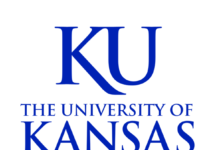Spare trees and shrubs pruning until next spring
Woody plants are storing energy reserves for winter, says K-State’s Upham
MANHATTAN, Kan. – While there may be some temptation to shape up trees and shrubs this fall, Kansas State University horticulture expert Ward Upham says that work is best left to next spring.
“Woody plants move sugars and other materials from the leaves to storage places in the woody portions of the plant just prior to the leaves falling,” Upham said. “We would like to maximize those stored energy reserves, so pruning trees and shrubs right now is not advised.”
Upham noted published work that indicates woody plants are less likely to be winter-hardy when pruned in the fall.
“Light pruning and removing dead wood are fine this time of year, but you may want to delay severe pruning until spring,” he said.
“Light” pruning means 10% or less of the plant is removed (not counting dead wood). “Keep in mind that even light pruning of spring-blooming shrubs such as lilac and forsythia will reduce flowers next year,” Upham said. “We normally recommend that spring-bloomers be pruned after flowering.”
He added that shrubs often differ in how severely they can be cut back. For example, junipers do not break buds from within the plant and should be trimmed lightly if you want the shrub to keep its full shape. Otherwise, he notes, overgrown junipers should be removed.
“On the other hand, there are certain shrubs that can be pruned back severely in the spring,” Upham said. “The most severe type of pruning is called rejuvenation, and may be used on multi-stem shrubs that have become too large and with too many branches to justify saving the younger canes.”
Some of the shrubs that fall into this category include spirea, forsythia, pyracantha, ninebark, Russian almond, sweet mock orange, shrub roses and flowering quince.
“Just remember that spring is the correct time for severe pruning,” Upham said. “Not now.”
Upham and his colleagues in K-State’s Department of Horticulture and Natural Resources produce a weekly Horticulture Newsletter with tips for maintaining home landscapes. The newsletter is available to view online or can be delivered by email each week.
Interested persons can also send their garden- and yard-related questions to Upham at wupham@ksu.edu, or contact your local K-State Research and Extension office.
-30-
FOR PRINT PUBLICATIONS: Links used in this story
K-State Horticulture Newsletter, https://hnr.k-state.edu/extension/info-center/newsletters/index.html
K-State Research and Extension local offices, www.ksre.k-state.edu/about/stateandareamaps.html
K‑State Research and Extension is a short name for the Kansas State University Agricultural Experiment Station and Cooperative Extension Service, a program designed to generate and distribute useful knowledge for the well‑being of Kansans. Supported by county, state, federal and private funds, the program has county extension offices, experiment fields, area extension offices and regional research centers statewide. Its headquarters is on the K‑State campus in Manhattan. For more information, visit www.ksre.ksu.edu. K-State Research and Extension is an equal opportunity provider and employer.
Story by:
Pat Melgares
785-532-1160
For more information:
Ward Upham
785-532-6173



